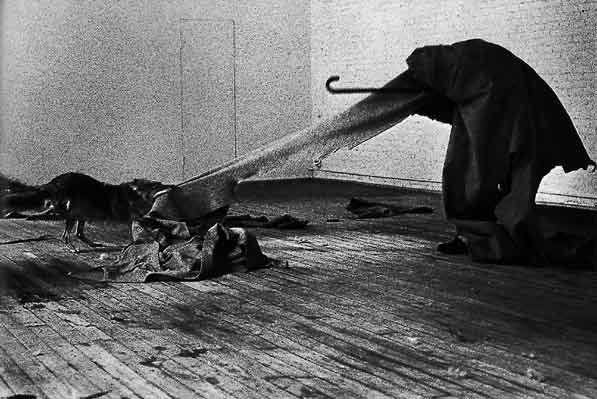Joseph-Beuys


Still images from “I Like America and America Likes Me” 1980
Beuys’ extensive body of work principally comprises four domains: works of art in a traditional sense (painting, drawing, sculpture and installations), performance, contributions to the theory of art and academic teaching, and social- and political activities.
The concept of “Social Sculpture”
It was during the 1960s that Beuys formulated his central theoretical concepts concerning the social, cultural and political function and potential of art.
Indebted to Romantic writers such as Novalis and Schiller, Beuys was motivated by a utopian belief in the power of universal human creativity and was confident in the potential for art to bring about revolutionary change.
These ideas were founded in the social ideas of anthroposophy and the work of Rudolf Steiner, of which he was a vigorous and original proponent. This translated into Beuys’s formulation of the concept of social sculpture, in which society as a whole was to be regarded as one great work of art (the Wagnerian Gesamtkunstwerk) to which each person can contribute creatively (perhaps Beuys’s most famous phrase, borrowed from Novalis, is ‘Everyone is an artist’). In the video “Willoughby SHARP,Joseph Beuys, Public Dialogues (1974/120 min)”, a record of Beuy’s first major public discussion in the U.S., Beuys elaborates three principles: Freedom, Democracy, and Socialism, saying that each of them depends on the other two in order to be meaningful.
Beuys wrote:
“Only on condition of a radical widening of definitions will it be possible for art and activities related to art [to] provide evidence that art is now the only evolutionary-revolutionary power. Only art is capable of dismantling the repressive effects of a senile social system that continues to totter along the deathline: to dismantle in order to build ‘A SOCIAL ORGANISM AS A WORK OF ART’… EVERY HUMAN BEING IS AN ARTIST who – from his state of freedom – the position of freedom that he experiences at first-hand – learns to determine the other positions of the TOTAL ART WORK OF THE FUTURE SOCIAL ORDER.”
In 1982 he was invited to create a work for Documenta 7. He delivered a large pile of basalt stones. From above one could see that the pile of stones was a large arrow pointing to a single oak tree that he had planted. He announced that the stones should not be moved unless an oak tree was planted in the new location of the stone. 7,000 oak trees were then planted in Kassel, Germany. This project exemplified the idea that asocial sculpture was defined as interdisciplinary and participatory. Beuys’s wanted to effect environmental and social change through this project. The Dia Art Foundation continues his project still and has planted more trees and paired them with basalt stones too.
"My point with these seven thousand trees was that each would be a monument, consisting of a living part, the live tree, changing all the time, and a crystalline mass, maintaining its shape, size, and weight. This stone can be transformed only by taking from it, when a piece splinters off, say, never by growing. By placing these two objects side by side, the proportionality of the monument’s two parts will never be the same."